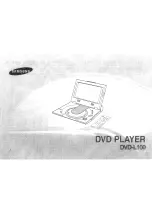
7
8
ASSEMBLy
Add Fuel Cont’d.
Grounding
Your generator must be properly connected to an
appropriate ground to help prevent electric shock.
A ground terminal connected to the frame of the generator
has been provided on the power panel. For remote
grounding, connect of a length of heavy gauge
(12 AWG minimum) copper wire between the generator
ground terminal and a copper rod driven into the ground.
We strongly recommend that you consult with a qualified
electrician to ensure compliance with local electrical codes.
Failure to properly ground the generator can result
in electric shock.
WARNING
Our engines work well with 10% or less ethanol
blend fuels. When using blended fuels there are
some issues worth noting:
– Ethanol-gasoline blends can absorb more water
than gasoline alone.
– These blends can eventually separate, leaving
water or a watery goo in the tank, fuel valve and
carburetor.
– With gravity-fed fuel supplies, this compromised
fuel can be drawn into the carburetor and cause
damage to the engine and/or potential hazards.
– There are only a few suppliers of fuel stabilizer
that are formulated to work with ethanol blend
fuels.
– Any damages or hazards caused by using
improper fuel, improperly stored fuel, and/
or improperly formulated stabilizers, are not
covered by manufacture’s warranty.
It is advisable to always shut off the fuel supply,
run the engine to fuel starvation and drain the tank
when the equipment is not in use for more than 30
days.
NOTE
Add Fuel
1. Use clean, fresh, regular unleaded fuel with a
minimum octane rating of 85 and an ethanol content
of less than 10% by volume.
2. DO NOT mix oil with fuel.
3. Clean the area around the fuel cap.
4. Remove the fuel cap.
5. Slowly add fuel to the tank. DO NOT OVERFILL. Fuel
can expand after filling. A minimum of
¼ in. (6.4 mm) of space left in the tank is required
for fuel expansion, more than ¼ in. (6.4 mm) is
recommended. Fuel can be forced out of the tank as
a result of expansion if it is overfilled, and can affect
the stable running condition of the product. When
filling the tank, it is recommended to leave enough
space for the fuel to expand.
6. Screw on the fuel cap and wipe away any spilled fuel.
Use regular unleaded gasoline with a minimum
octane rating of 85.
Do not mix oil and gasoline.
Fill tank to approximately ¼ in. (6.4 mm) below the
top of the tank to allow for fuel expansion.
DO NOT pump gas directly into the generator at the
gas station. Use an approved container to transfer
the fuel to the generator.
DO NOT fill fuel tank indoors.
DO NOT fill fuel tank when the engine is running or hot.
DO NOT overfill the fuel tank.
DO NOT light cigarettes or smoke when filling the
fuel tank.
CAUTION
Pouring fuel too fast through the fuel screen may
result in blow back of fuel at the operator while filling.
WARNING
OPERATION
Generator Location
Never operate the generator inside any building! (See
safety warnings section). In some areas generators must
be registered with the local utility company. Generators
used on construction sites may be subject to local
rules and regulations. Keep on a flat, level surface.
Generators must have at least 5 ft (1.5m) clearance
from all combustible material. In addition they must
have at least 3 ft (91.4cm) of clearance on all sides to
allow for adequate cooling, maintenance and servicing.
Generators should never be started or operated in ant
location that will not allow for adequate cooling of
the generator and/or the muffler. Allow generators to
cool before storage or transportation. Do not place the
generator near any vents or intakes. Carefully consider
wind and air currents when placing generator.
Failure to follow proper safety precautions may void
manufacturer’s warranty.
Do not operate or store the generator in rain, snow,
or wet weather.
Using a generator or electrical appliance in wet
conditions, such as rain or snow, or near a pool or
sprinkler system, or when your hands are wet, could
result in electrocution.
WARNING
WARNING
During operation the muffler and exhaust fumes
produced will become hot. If adequate cooling and
breathing space are not supplied, or if the generator
is blocked or contained, temperatures can become
extremely heated and may lead to fire.
Surge Protection
Electronic devices, including computers and many
programmable appliances use components that are
designed to operate within a narrow voltage range and
may be affected by momentary voltage fluctuations.
While there is no way to prevent voltage fluctuations, you
can take steps to protect sensitive electronic equipment.
1. Install UL1449, CSA-listed, plug-in surge suppressors
on the outlets feeding your sensitive equipment.
Surge suppressors come in single- or multi-outlet
styles. They’re designed to protect against virtually
all short-duration voltage fluctuations.
Voltage fluctuation may impair the proper
functioning of sensitive electronic equipment.
CAUTION
Starting the Engine
1. Make certain the generator is on a flat, level surface.
2. Disconnect all electrical loads from the generator.
Never start or stop the generator with electrical
devices plugged in or turned on.
3. Turn the Fuel Valve to the “ON” position.
4. Move the choke lever to the “CHOKE” position.
5. Flip the ignition switch to the “ON” position.
6. For models that have an ELECTRIC START: Press
and hold the ignition switch to the “START” position.
Release as the engine begins to roll over. If the engine
fails to start within five seconds, release the switch
and wait at least ten seconds before attempting to
start the engine again.
7. RECOIL START: Pull the starter cord slowly until
resistance is felt and then pull rapidly
8. Do not over-choke. As as soon as engine starts, move
the choke lever to the “RUN” position.
Grounding
The generator system ground connects the frame to the
ground terminals on the power panel. The system ground is
connected to the AC neutral wire.
Содержание CPG 9000 E2
Страница 21: ......






































